Ross is an historic town in the Midlands of the state of Tasmania in Australia. On the Macquarie River,
Ross is located 78 km south of
Launceston and 117 km north of
Hobart. The town is listed on the Register of the National Estate and is noted for its historic
bridge, original
sandstone buildings and convict history, Originally established as a garrison in 1821, it was laid out as a town, but was not proclaimed as such until 1847.
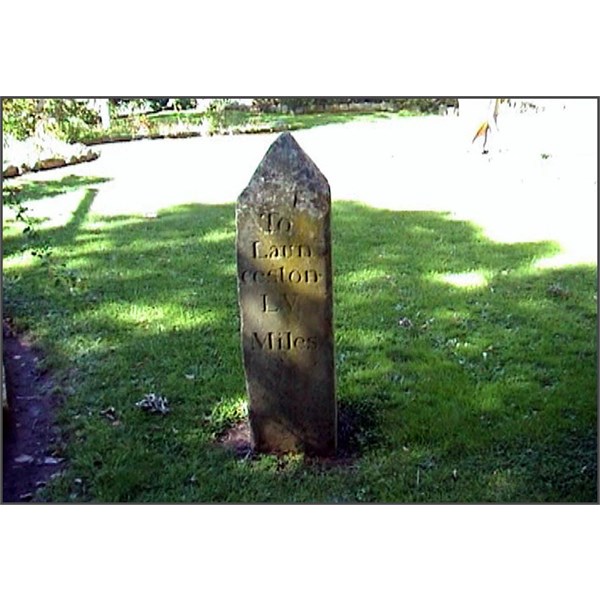
This old mile post tells travellers that Launceston is 55 miles away from Ross.
The town of
Ross lies in lands that were traditionally owned by Tasmanian Aborigines, specifically the Tyrernotepanner (Stony Creek) Nation. The aboriginal name for the area that now constitutes the
Ross township was mackerler.
The first European to explore the district was surveyor Charles Grimes who passed through the area while mapping Tasmania's central area including parts of what later became known as the Macquarie River. On an expedition in 1811, Governor Lachlan Macquarie passed through the area himself and, as he recorded in his journal,
(I named our last Night's Station "Ross", in honor of H. M. Buchanan Esqr. – that being the name of his
Seat on
Loch-Lomond in Scotland; this part of Argyle Plains on the Right Bank of the Macquarie River being very beautiful and commanding a noble view.)
Later that year, a timber
bridge was built over the river and subsequently
Ross became an important stopover on road journeys between
Launceston and
Hobart. It developed as a base for the local garrison and became a centre for trade for the surrounding district.
Ross Post Office opened on 1 June 1832. In 1836 the stone
bridge, known as
Ross Bridge, was completed. The
well-known
sandstone bridge was constructed by convict labour in 1836, and is the third oldest
bridge still in use in Australia. Commissioned by Lieutenant-Governor Arthur, the
bridge was designed by architect
John Lee Archer, with the convict work team including two stonemasons,
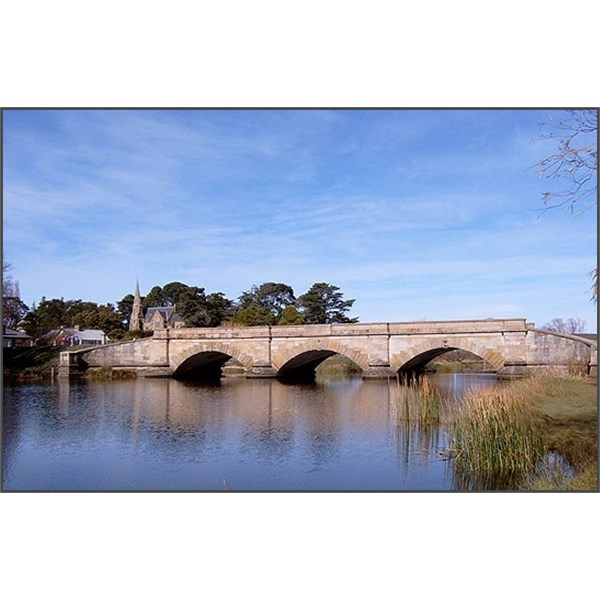
Ross Bridge
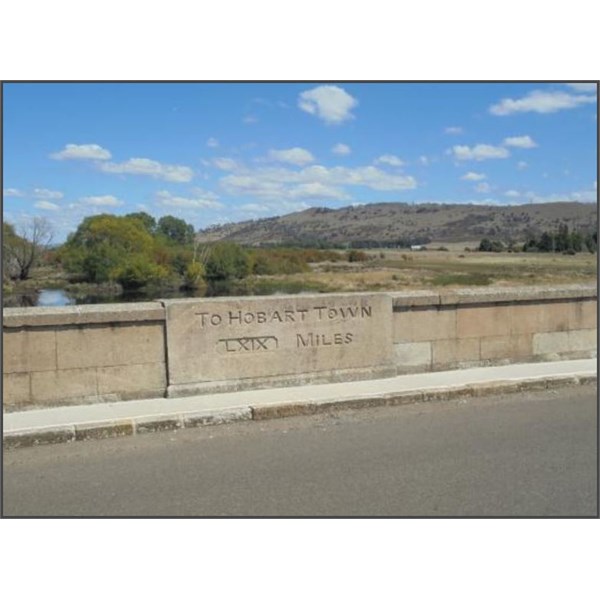
To Hobart engraved on the bridge
James Colbeck and Daniel Herbert, the latter being credited with the intricate carvings along both sides of the
bridge, Once pardoned, Herbert married and lived in
Ross, and is buried there.
Report in the
Launceston Examiner, Tasmania, Friday 1st January 1886, on page 2. “On Nov. 23 a new Wesleyan Church was opened at
Ross. It is built of freestone, and cost £4241, The opening service took place on 22 November 1885. The church was described as thus:
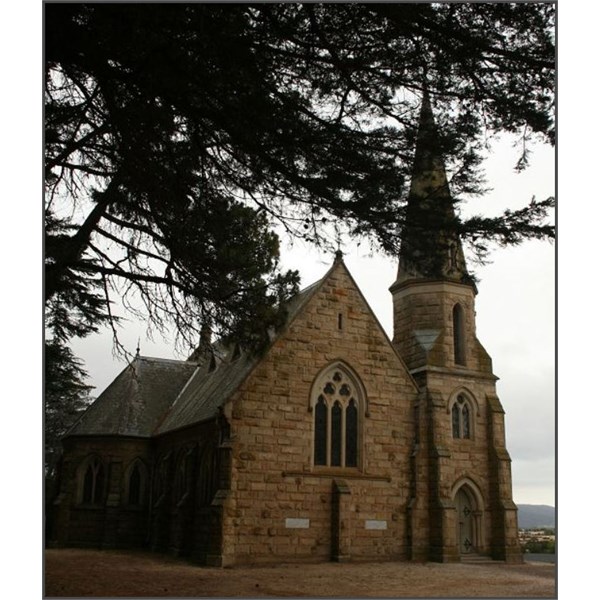
Wesleyan Church, Ross
The Wesleyan Church stands upon an elevated site in Church-street ; it is the first object that meets the eye of the traveller approaching the town by any road. The site was the gift of Mr. Thos. Parramore. The church, which is built upon a
rock, is of free-stone taken from the Beaufront Estate. The masonry work, which is very solid, was performed by workmen paid day wages under the supervision of Mr. Will. The roof is slated. The whole of the woodwork, including the internal fittings, was done by Messrs. J. and T. Gunn, of
Launceston, and reflects great credit upon that firm, the . On the north side of the church is a beautifully stained window, placed there at a cost of £130 2s. 11d.
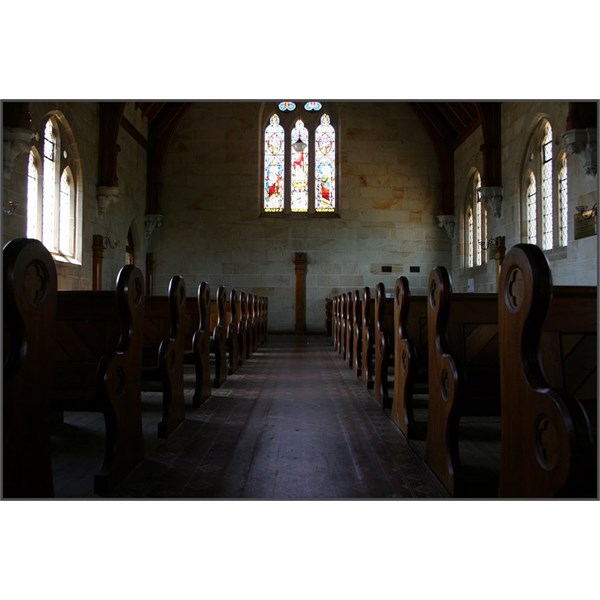
The stained glass windows
This window was given by old students of Horton College, as a memorial of their connection with that institution. A stained window is in course of execution, and will shortly be placed in the east end of the church, in memory of the late Thomas and Frances Margaret Parramore, the gift of their three children. The church will comfortably
seat from 230 to 300 persons, and the voice of the preacher can be heard clear and distinct from any part of the building.
By the time of Australian Federation in 1901, the permanent
population had grown to 311 and the wider area had become known as a fine wool growing district. At this time
Ross had four churches, a post and telegraph office, a savings bank, one hotel, and a town hall and library.
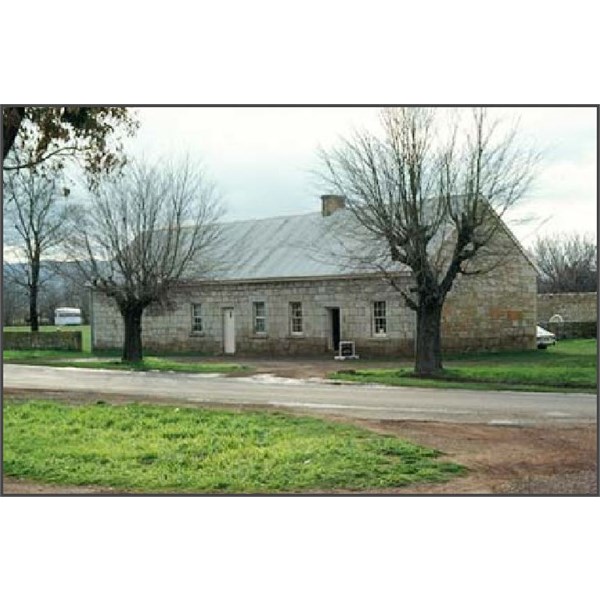
The Barracks where detachments of soldiers from a number of famous British regiments once lived and guarded convicts
The former Army Orderly Room is a stone Colonial building which was the first army headquarters in
Ross. Nearby is the Royal Ordnance Corps Store, which was erected in 1836 and has the corps crest carved above the door. This building now houses the
Ross Memorial Library and
Recreation Room.
The Council Clerk's cottage, situated on the south-west corner of Church and High Streets is a single storey Georgian building. The western wing of this building incorporates the former police buildings. A jail also stood on this site.
Near the
Ross Bridge stands the former
military barracks, a single-storey Colonial building which has been recently restored.
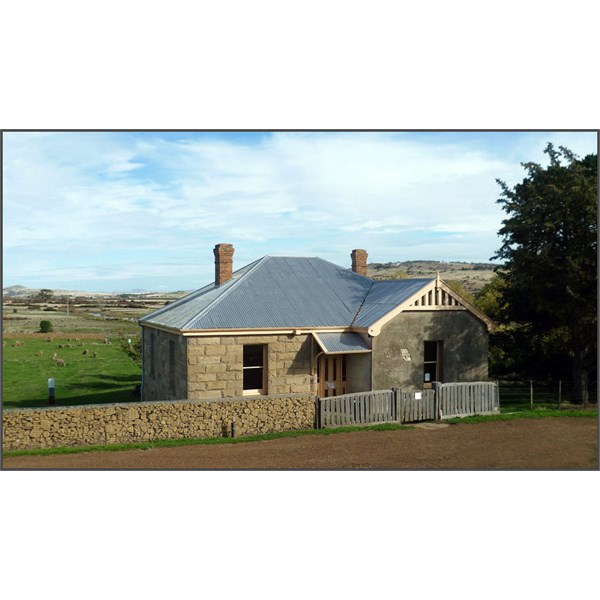
The Commandant's Cottage is all that is left of the old Female Factory
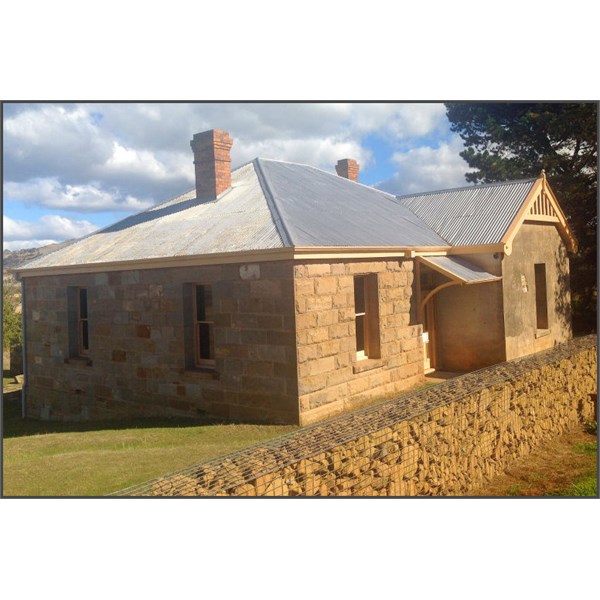
The Commandant's Cottage
The remains of the old female factory, a prison for women between 1847 and 1854, are open to the public. The female factory housed 12,000 female convicts during this period.
The convict site dates back to the 1840s. Usually referred to as the Female Factory, it was one of only a few female convict compounds in Australia. There is one remaining building on the site, the Assistant Superintendent's Quarters, which currently houses a display relating to the site.
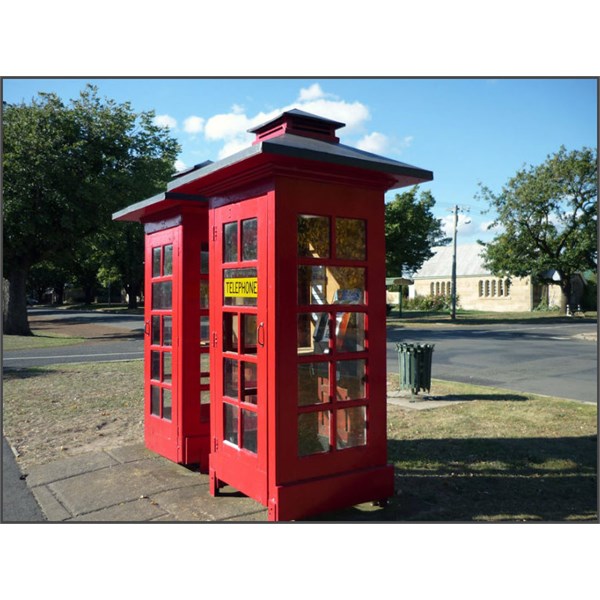
Ross has even retained its mid 20th Century telephone boxes with working modern phones inside them.
.